NIL
New NIL bill enables Texas A&M, other universities in Lone Star State to directly pay their athletes
For the first time ever, Texas A&M and other universities in the Lone Star State are now able to directly pay their athletes with name, image and likeness (NIL) compensation. Texas Gov. Greg Abbott helped that new reality come to fruition, signing House Bill 126 into law Thursday, effective immediately, after it passed in both chambers of […]



For the first time ever, Texas A&M and other universities in the Lone Star State are now able to directly pay their athletes with name, image and likeness (NIL) compensation. Texas Gov. Greg Abbott helped that new reality come to fruition, signing House Bill 126 into law Thursday, effective immediately, after it passed in both chambers of the state legislature with two-thirds majority votes.
Under HB 126, athletes who are at least 17 years old and enrolled in a Texas college can sign NIL contracts with their university and third-party entities. The state law previously prohibited athletes from entering NIL agreements with their university but permitted such deals with third-party brands and collectives.
That precedent needed to be changed to align with the pending House v. NCAA antitrust case, which would introduce a revenue-sharing system to college athletics on July 1 if U.S. District Judge Claudia Wilken grants it final approval by the June 27 deadline. It would more specifically allow athletic departments to pay their players up to 22% of their annual revenue, which will be approximately $20.5 million in the 2025-26 seasons.
“Texas A&M Athletics is pleased that House Bill 126 was passed by the legislature and signed by the Governor,” Aggie athletics director Alberts told GigEm247 in a statement. “This bill allows our Texas universities to enter into agreements for name, image and likeness with our student-athletes.
“In addition to being able to keep our outstanding young people attending and competing for our state schools, we will be able to better safeguard the wellbeing of our young people.”
At the annual SEC spring meetings last week in Destin, Fla., Alberts told reporters A&M plans to share revenue with six of its 15 athletics programs. However, he did not reveal which of those programs are among that six, along with the percentage of the revenue each would receive.
A&M also intends to fully fund its athletes in every sport, Alberts told reporters at SEC spring meetings. He said the proposed settlement, if approved, would increase its allotted number of athletes on full scholarship from 255 to 410.
“Each institution is going to do what they think is in their best interest. We have not broken it down,” said Alberts last week on their revenue-sharing plan. “Some institutions have said, OK, we are going to take a look at all of our revenue that each sport generates, and we are going to equate that percentage to the rev share. We did not choose to do that in Texas A&M. I think each school is different culturally. That is why I think each institution has to make these decisions based on what is important for them.
“For us, I am trying to allocate rev share in sports that I can grow revenue, because at the end of the day … there are opportunities. What sports do you have additional seats? Where do you have attendance? So you can figure some of that out.”
Even if Wilken does not approve the proposed settlement, HB 126 could embolden the Aggies and other athletics departments to still share revenue with their athletes.
“I think the general sentiment is, we may just go forward and share revenue anyway,” said Alberts at the SEC spring meetings last week. “We want to do this. We think we have built something that makes a lot of sense, that brings some – stability is the wrong word all the time. But (it) just brings some common sense to what we are doing.”
NIL
Rhett Lashlee fires shot at Curt Cignetti after Indiana coach’s SEC scheduling comment
One week after SEC Media Days, the conference remained a popular piece of conversation elsewhere, just ask Greg Sankey. Two coaches, in particular, found themselves in headlines — SMU‘s Rhett Lashlee and Curt Cignetti of Indiana. Neither one made folks inside the SEC quite happy with what was said. Lashlee wanted to make sure everyone […]

One week after SEC Media Days, the conference remained a popular piece of conversation elsewhere, just ask Greg Sankey. Two coaches, in particular, found themselves in headlines — SMU‘s Rhett Lashlee and Curt Cignetti of Indiana. Neither one made folks inside the SEC quite happy with what was said.
Lashlee wanted to make sure everyone understood the difference between the two, though. He commented on how the SEC has been “top-heavy” and pointed out only six schools have won the conference over the course of 60 years. Different from Cignetti, in his opinion, who threw “shade” at the SEC at Big Ten Media Days.
“I will differentiate from what I said to what Cignetti said,” Lashlee said via The Paul Finebaum Show. “Again, I just brought up a historical fact that can be backed up by data. I didn’t come out and throw shade at the SEC scheduling when I didn’t play a power four team on my schedule myself.”
Indiana once again sparked up a Strength of Schedule conversation this month after canceling a home-and-home series with Virginia. Instead, Cignetti will lead his team onto the field against FCS opponents during the 2027 and 2028 seasons. When asked about the decision, he ended his quote by going after the SEC’s scheduling.
“Twelve of the 16 SEC teams play three G5 or an FCS game,” Cignetti said. “Twelve of those teams play 36 games – 29 G5 games and seven FCS games, and one less conference game. So we figured we’d just adopt [an] SEC scheduling philosophy. Some people don’t like it. I’m more focused in on those nine conference games.”
As Lashlee subtly pointed out on Finebaum, the only power conference games Indiana played last season came during Big Ten play. The Hooisers’ nonconference games were against FIU, Western Illinois, and Charlotte. To pile on, many SEC fans and coaches would then signal to only one ranked opponent being against Ohio State, a game IU lost 38-15. Almost no topic was discussed more leading into the College Football Playoff.
What the SMU head coach said may have upset people inside the SEC as he looks to politic in favor of the ACC. But he believes coming into the argument with some data is different than what Cignetti presented while talking with the media. While you might be able to argue about the term “top-heavy,” there is no denying Lashlee’s main point about the same six programs continually winning the SEC Championship.
NIL
TRENDING
Aug 30, 2024; Madison, Wisconsin, USA; General view of the MAC Conference logo on a Western Michigan Broncos helmet during warmups prior to the game against the Wisconsin Badgers at Camp Randall StadiumPhoto Credit: © Jeff Hanisch-Imagn Images By Mark Pszonak With MAC media day taking place last Thursday, it gave the top players in […]


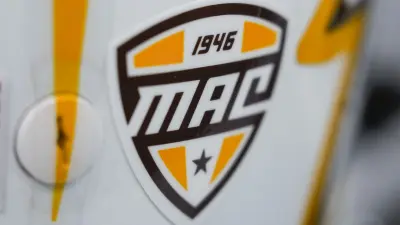
Photo Credit: © Jeff Hanisch-Imagn Images
By Mark Pszonak
With MAC media day taking place last Thursday, it gave the top players in the conference an opportunity to discuss a number of topics. One of these was the current NIL and the transfer portal world. Thanks to David Briggs of The Toledo Blade, he received some interesting quotes regarding this topic.
Briggs did not use any of the player’s names during his interviews, but several explained the process of the coaches from other schools contacting them during the offseason regarding a possible transfer. Here are a couple of examples from the article:
● “There are a lot of middlemen. And if a coach follows you on Twitter, that’s kind of a signal. They’ll try to reach out without reaching out.”
● “A lot of coaches just hit me up. There were a lot of bigger schools reaching out and a couple agents, too, trying to get me to go into the portal. The money was good. … The biggest number I heard was a million. But I had to think about the long run. You can’t think about the short term. That’s what was in my head. I want to make it to the league and get that long money — the real money. The grass isn’t always greener.”
● “It’s not the schools necessarily reaching out. It’s people trying to make a quick buck off you with the commission. What’s important for me was being with my guys and getting my degree. That’s still the most important thing, and people lose sight of that.”
These comments are from players who turned down the opportunities and decided to return to their MAC school. However, many other top players from the conference did transfer to a P4 school during the offseason. Just a few of these include CB Raion Strader (Miami-Ohio to Auburn), WR Reggie Virgil (Miami-Ohio to Texas Tech), DE Bradley Weaver (Ohio to Rutgers), OL Alex Wollschlaeger (Bowling Green to Kentucky), LB James Djonkam (Eastern Michigan to Virginia Tech) and RB Terion Stewart (Bowling Green to Virginia Tech).
More Sports News
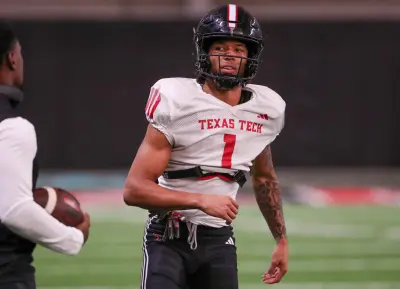
This is a trend that is sure to continue in the coming years. Top players from the MAC, Sun Belt, Mountain West, Conference USA and the AC will have choices to make. Some will stay in the G5 while others will seek greener pastures. And while those pastures will likely have more NIL money, some will also realize that they made the wrong decision. Only time will tell how many of the players who did transfer during the 2024/2025 off-season will have regrets down the line.
NIL
NCAA Appealing Rutgers’ Jett Elad’s Five-Year Eligibility Case
The NCAA contends the U.S. Court of Appeals for the Third Circuit should avoid becoming “the first appellate court in the nation to invalidate sensible limits on how long student-athletes can play college sports” and thus should reverse a trial court’s preliminary injunction allowing 24-year-old Rutgers transfer Jett Elad to play for the Scarlet Knights […]
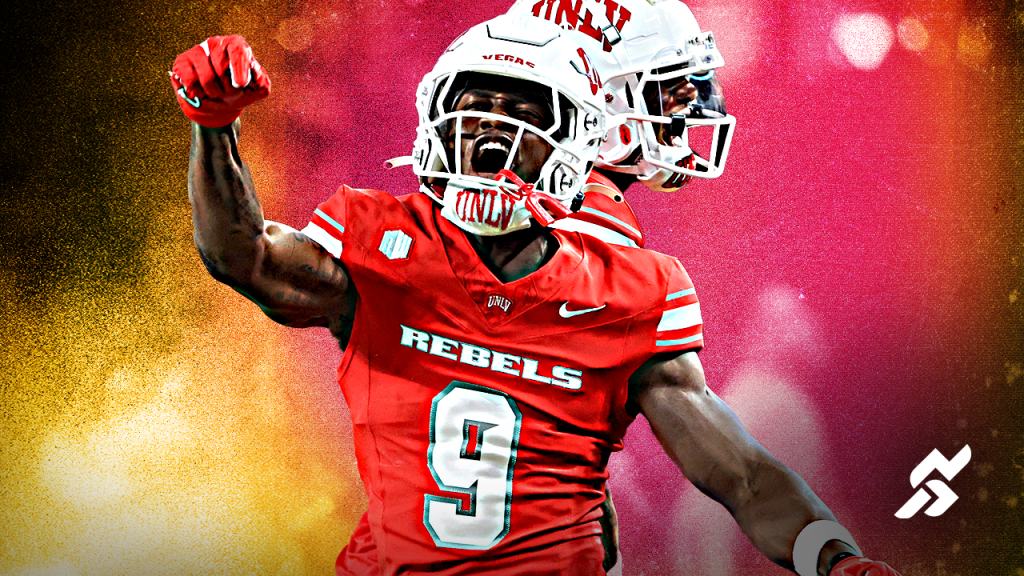
The NCAA contends the U.S. Court of Appeals for the Third Circuit should avoid becoming “the first appellate court in the nation to invalidate sensible limits on how long student-athletes can play college sports” and thus should reverse a trial court’s preliminary injunction allowing 24-year-old Rutgers transfer Jett Elad to play for the Scarlet Knights this fall.
The argument was featured in a brief filed by the NCAA last Friday. The brief disputed testimony by Rutgers head football coach Greg Schiano, whose remarks about Elad’s NIL opportunities and potential NFL career were dismissed as reliant on “self-interested, non-expert [and] subjective beliefs.”
In April, U.S. District Judge Zahid N. Quraishi blocked the NCAA from disqualifying the 24-year-old Canadian safety from playing this fall. As Sportico detailed, Rutgers is Elad’s fourth college as he previously attended Ohio University, Garden City Community College (JUCO) and UNLV. Elad has already played four seasons (2021, 2022, 2023 and 2024) in five years (2019, 2021, 2022, 2023 and 2024). He is thus ineligible under the NCAA’s five-year eligibility rule, which limits athletes to four seasons of intercollegiate competition—including JUCO competition—in any one sport within a five-year window.
If deemed eligible, Elad figures to play a prominent role for the Scarlet Knights’ defense. He’s (clearly) a seasoned player at the collegiate level. Elad is an accomplished player, too, having been a finalist for the 2024 Jon Cornish Trophy, which recognizes the top Canadian in NCAA football, and was honorable mention for the All-Mountain West Team.
In his order, Quraishi wrote critically about the five-year rule. He described it as unreasonably restraining the labor market for players who can sign lucrative NIL deals, nowadays receive a revenue share via the House settlement and, as the judge noted, “transition into the NFL.”
Quraishi indicated Schiano’s testimony on behalf of Elad was especially persuasive. As a former NFL coach and experienced power conference coach, Schiano’s opinion that Elad is an “NFL-caliber safety” who would benefit greatly by having the chance to showcase his talents at the NFL combine was viewed as an authoritative and reliable statement about Elad’s future.
Although Elad could have declared for the 2025 NFL Draft, Schiano explained that Elad was “under the impression that he was going to be able to play another season of college football.” Elad relied, mistakenly, on the NCAA issuing a JUCO waiver policy in the wake of Vanderbilt quarterback and former JUCO transfer Diego Pavia receiving a court ruling last December to play another season this fall.
The gist of Quraishi’s injunction for Elad was that college football, at least at a power conference school, shares some features of a professional football experience and the players, while still full-time students, ought to be viewed as selling services to teams.
In a brief authored by Kenneth L. Racowski and other attorneys from Holland & Knight, the NCAA contends Quraishi fumbled key aspects of the case.
One alleged defect is Quraishi placing importance in Schiano’s “subjective belief that playing for Rutgers will lead to Elad being drafted by an NFL team.” The NCAA argues this testimony was “inherently speculative,” since it frames “whether scouts see him in another college season” as a determinative factor without empirical support. The NCAA adds that Schiano’s acknowledgment that an injury “would prevent Elad from being drafted” only serves to confirm “that Elad’s NFL prospects depend on numerous factors that are out of Coach Schiano’s hands.”
Another alleged weakness in the injunction is how Elad relies on the U.S. Supreme Court’s decision in NCAA v. Alston (2021). The NCAA stresses that Alston “had nothing to do with eligibility rules” and didn’t “call into question every rule that might impact commercial opportunities” for college athletes. Alston was about NCAA rules restricting education-related benefits for student athletes—not whether college athletes can sign NIL deals or eligibility rules.
The NCAA also argues that Elad’s exclusion from playing college football doesn’t show the rule causes economic harm from a market standpoint. The rule doesn’t “reduce the number of roster spots” but instead “defines and limits” which athletes can “compete for opportunities and for how long.” The rule reflects the “zero-sum game” of team rosters, since Elad’s inclusion would mean another player isn’t on the Scarlet Knights’ roster and thus wouldn’t be able to sign NIL deals as a Rutgers player.
“Even Coach Schiano’s testimony,” the NCAA asserts, “concedes that Elad would be taking away a roster spot from another player, who will not make the Rutgers roster, and playing time from another player who would otherwise get snaps that Elad plays.”
The NCAA also insists there are important justifications for the five-year rule, including that it is designed for college athletes in a period that “roughly corresponds to the time required to complete most college studies.” Elad’s “framework” for college sports, the NCAA charges, would permit athletes to train at JUCO, D-II and D-III “indefinitely before transferring to Division I with four full seasons remaining.” This approach would allegedly “fundamentally alter the structure of college sports” and constitute a “complete redefinition” akin to a minor league. Along those lines, the NCAA invites the Third Circuit to think about the ramifications of permitting athletes “to participate in college sports well past the time necessary for them to complete a college degree.”
Elad’s case is one of many taking place in courtrooms featuring seasoned college athletes who want to keep playing after exhausting their NCAA eligibility. As the NCAA notes, the U.S. Court of Appeals for the Seventh Circuit recently sided with the NCAA in a case brought by Wisconsin cornerback Nyzier Fourqurean to play a fifth season of college football in five years. The possibility of the Third Circuit or another federal circuit siding with an athlete invites a potential “circuit split,” meaning federal courts of appeals holding conflicting views about the same legal question, with the Seventh Circuit. Circuit splits provide a compelling reason for the U.S. Supreme Court to intervene, since otherwise the rights and obligations of Americans can vary based on which circuit their cases happen to be litigated.
NIL
Paul Finebaum reacts to UNC, SEC rumors, makes prediction on if move will happen
Earlier last week, sources told Inside Carolina‘s Adam Smith that North Carolina could be exploring a move away from the ACC to the SEC. The Tar Heels are reportedly at the front of the pack when it comes to ACC schools looking to move, and it could happen in the near future. As is usually the case […]
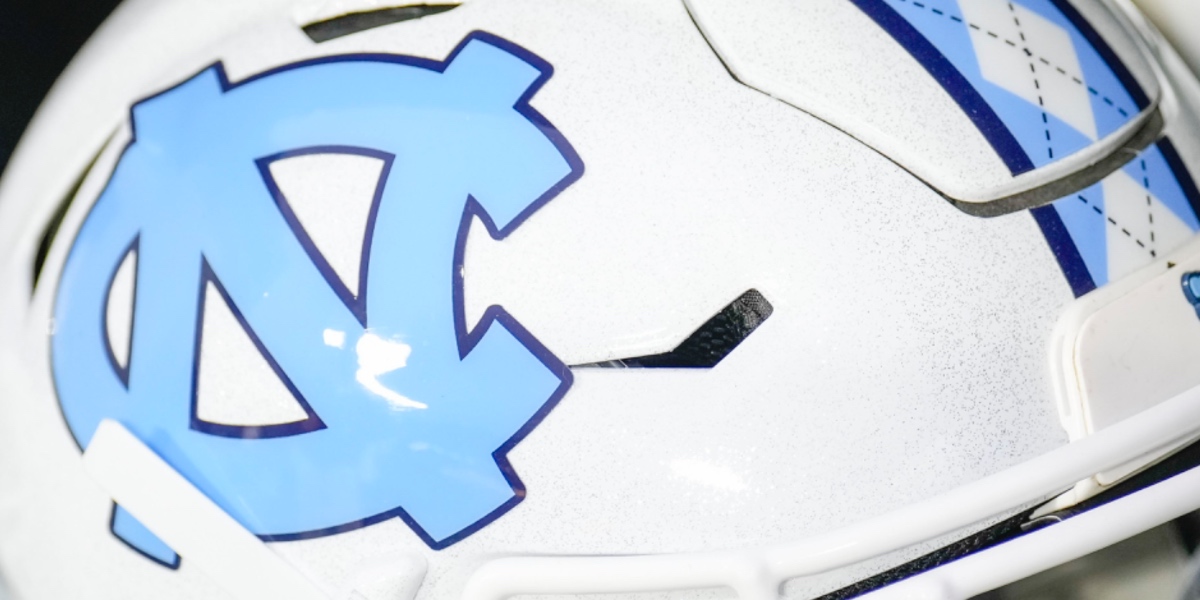
Earlier last week, sources told Inside Carolina‘s Adam Smith that North Carolina could be exploring a move away from the ACC to the SEC. The Tar Heels are reportedly at the front of the pack when it comes to ACC schools looking to move, and it could happen in the near future.
As is usually the case when it comes to anything SEC, Paul Finebaum made his opinion known on the matter. He’s not shying away from the potential of UNC in the SEC, believing that it’s more plausible than ever that the Tar Heels could join the conference.
“I think No. 1, one of the people that we talked to the other day seemed to indicate that the commissioner was involved, and I don’t speak for anyone, but I think it’s safe to know that anyone who is close to, or has been around Greg Sankey, knows this — he has not spoken, formally or informally, to anyone. That’s not how he works. That’s not how he’s going to work, especially in light of what happened a couple of years ago,” Finebaum stated, via McElroy and Cubelic in the Morning. “It sounds very much to me like people close to North Carolina are floating this out there, probably frustrated with their current position, even though the ACC is now singing Kumbaya.
“We all know that there are a lot of anxious schools there. I’ve said all that as a preamble, to say that I think ultimately it’s going to happen. I took a long way to get to it, but I think when, once we get to this next iteration, North Carolina has always been the No. 1 choice of many people in SEC circles. I think the bigger question is when exactly does it happen, and secondly, who would their drafting partner be.”
Additionally, Finebaum isn’t the only prominent SEC figure believing UNC could join the conference. Greg McElroy responded in a similar vein, thinking that the hire of Bill Belichick is signaling something in the works for the Tar Heels.
“It kind of checks out, Paul. Every single time a team hires a superstar head coach, they seem to be on the move. Colorado is an example. A splashy head coach, they seem to be on the move. Texas hiring Sarkisian. These are not really that uncommon,” McElroy explained. “You can kind of connect the dots back. Bill Belichick now being at North Carolina makes you feel like, you know what, there might be something to this.”
For now, Bill Belichick and North Carolina will focus on the ACC, but in the future? The Tar Heels could be on the move to the SEC, and that would certainly shake up the college sports landscape in more ways than one. We’ll see if where there’s smoke, there’s fire.
NIL
AJ Dybantsa Leaves a Short Message for Caitlin Clark During BYU Practice
In the middle of ongoing speculation about athletes’ loyalty to brands and their willingness to express themselves, BYU’s number one recruit, AJ Dybantsa from the 2025 class, unexpectedly delivered a brief but meaningful shout-out to WNBA star Caitlin Clark. The gesture offers a glimpse into how young athletes navigate endorsement deals while showing respect for […]


In the middle of ongoing speculation about athletes’ loyalty to brands and their willingness to express themselves, BYU’s number one recruit, AJ Dybantsa from the 2025 class, unexpectedly delivered a brief but meaningful shout-out to WNBA star Caitlin Clark. The gesture offers a glimpse into how young athletes navigate endorsement deals while showing respect for peers across different sports.
Why Did AJ Dybantsa Tag Caitlin Clark in His Nike Shoes Post?
During a practice session, Dybantsa posted an Instagram story showing him lacing up Clark’s signature Nike sneakers and tagged @CaitlinClark with fire emojis. The image featured him sporting the shoes courtside at the Marriott Center, creating buzz among fans of both basketball programs.
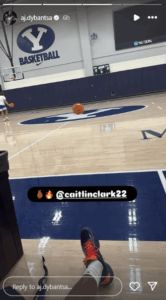
This moment highlights the mutual respect between rising stars in college basketball and established WNBA talent. Dybantsa’s choice to showcase Clark’s signature shoes while tagging her demonstrates the cross-sport admiration that exists among elite athletes.
Dybantsa’s recent performances have been quite notable on the court. At the Grind Session World Championship, he scored 14 points to lead Utah Prep to a commanding 80-57 win over The Fort, demonstrating both his scoring ability and his reach as a wing player.
Beyond national borders, Dybantsa dominated at the FIBA U19 World Cup, grabbing MVP honors after delivering 14.3 points, 4.1 rebounds, 2.3 assists, and 1.1 steals per game when Team USA took gold in Switzerland. His international success has only added to the excitement surrounding his upcoming college career.
How Do Dybantsa’s Endorsement Deals Complicate Brand Loyalty?
Off the court, Dybantsa has faced NIL endorsement questions that have sparked fresh discussion about athlete brand relationships. Though he signed a reported $4 million deal with Nike, he was spotted with New Balance gear, similar to Cooper Flagg’s choice, sparking debate over brand loyalty in college basketball.
Fans noticed his full New Balance kit during a photo with Dylan Harper at Summer League, despite Nike providing him with personalized GT Future P.E. sneakers and a custom ‘AJ’ logo. The contrast between his Nike contract and his New Balance appearances has created intrigue about how modern endorsement deals actually work.
The situation became more interesting when Dybantsa threw out the first pitch for his hometown Boston Red Sox wearing New Balance 1906 sneakers. This connection to Boston-based New Balance, which also recently signed Flagg, has created additional speculation around athlete endorsement strategies in the NIL era.
Here’s some better video of #BYU‘s AJ Dybantsa tossing out the first pitch before tonight’s Red Sox game at Fenway Park.#BYUHoops pic.twitter.com/DriTb3N9BE
— Sam Farnsworth (@Samsworth_TV) July 11, 2025
The shoe situation reveals the evolving nature of athlete endorsements, where what’s required on the court and what athletes prefer off the court can differ significantly. College basketball fans had varied reactions to these developments.
As Dybantsa prepares to start his first season at BYU with Coach Kevin Young, moments like tagging Clark in her shoes provide a brief glimpse into his personality and his admiration for other stars. The gesture shows how today’s athletes connect across sport boundaries while navigating the complex world of brand partnerships and personal expression.
NIL
My Turn
President Donald Trump hosts Florida’s NCAA champion men’s basketball team in May in the East Room at the White House in Washington, D.C. Yuri Gripas/Abaca Press/TNS The executive order signed last week by President Donald Trump — titled “Saving College Sports” — harms college sports. It will add more uncertainty by generating more lawsuits. But […]



President Donald Trump hosts Florida’s NCAA champion men’s basketball team in May in the East Room at the White House in Washington, D.C.
The executive order signed last week by President Donald Trump — titled “Saving College Sports” — harms college sports. It will add more uncertainty by generating more lawsuits.
But first, let’s consider its good points.
The order states that “the inability to maintain reasonable rules and guardrails is a mortal threat to most college sports.”
To this point, the order adds: “As a result, players at some universities will receive more than $50 million per year, mostly for the revenue-generating sports like football. … By the 2025 season, football players at one university will reportedly be paid $35-40 million, with revenue-sharing included.”
Yes, that is a serious problem stemming from the House v. NCAA settlement.
The order also takes direct aim at the power conferences:

Michael LeRoy
“This not only reduces competition and parity by creating an oligarchy of teams that can simply buy the best players — including the best players from less-wealthy programs at the end of each season — but the imperative that university donors must devote ever-escalating resources to compete in the revenue-generating sports like football and basketball siphons away the resources necessary to support the panoply of non-revenue sports.
“Absent guardrails to stop the madness and ensure a reasonable, balanced use of resources across collegiate athletic programs that preserves their educational and developmental benefits, many college sports will soon cease to exist.”
All of this is true.
But the order misidentifies “litigation” as the source of this problem.
In other words, the problem is lawsuits by athletes that seek a bigger share of the wealth they generate for millionaire coaches and athletic directors: “Waves of recent litigation against collegiate athletics’ governing rules have eliminated limits on athlete compensation, pay-for-play recruiting inducements, and transfers between universities, unleashing a sea change that threatens the viability of college sports.”
The order’s primary solution appears in Section 4, titled, “Legal Protections for College Athletics from Lawsuits.”
It says: “The Attorney General and the Chairman of the Federal Trade Commission shall work to stabilize and preserve college athletics through litigation, guidelines, policies or other actions, as appropriate, by protecting the rights and interests of student-athletes and the long-term availability of collegiate athletic scholarships and opportunities when such elements are unreasonably challenged under antitrust or other legal theories.”
What do “other legal theories” mean?
It could apply to this hypothetical situation.
A Big Ten basketball player ruptures his Achilles tendon in the first game of the season. He has signed an name, image and likeness deal worth $1 million, but he’ll be out the rest of the year.
The Big Ten form contract allows a school to adjust NIL pay. It doesn’t put any conditions on these adjustments.
Let’s say the school cuts the athlete’s pay to $100,000, claiming his NIL value dropped. The athlete sues the school for breach of contract, fraudulent inducement and breach of a duty of good faith and fair dealing.
This is a basic contract lawsuit.
Will the executive order limit this athlete’s access to the legal system by substituting a school’s dispute resolution process for a lawsuit?
My current research suggests that this is possible. We will see when the Department of Justice issues its guidelines.
Ironically, this order will launch more lawsuits.
For example: Is the executive order constitutional? Likely not.
Bloomberg reported that courts had entered over 200 orders to stop the administration’s actions in 128 cases through May 1. Courts allowed executive actions to proceed in 43 cases.
And let’s not forget that the Supreme Court voted 9-0 against the NCAA in the Alston case, which challenged the NCAA’s restrictions on student-athlete compensation. The justices are on the side of athletes, not NCAA power brokers who hoard the wealth in their fat-cat employment contracts.
The Sports Agent Responsibility and Trust Act regulates sports agents to protect college athletes from agent fraud. But the act has no NIL regulations.
Big Ten, beware
An executive order is valid insofar as it executes specific legislation.
In this case, there is no federal legislation for NIL, nor limits on pay to play, so there is nothing for the president to execute. So the order usurps legislative power that is reserved for Congress.
But the order poses deeper problems.
First, it adds new financial burdens to schools by directing more athletic scholarships for Olympic and women’s sports.
Second, it intends to limit player mobility in the transfer portal. This will create more market-rigging harm for athletes.
Thus, more lawsuits are likely.
Some lawsuits will seek to clarify how the House v. NCAA antitrust settlement works in this unexpected setting.
Schools might challenge their new financial obligations when they cannot pay for them.
Athletes will likely sue to overturn unconstitutional limits on how they are paid for NIL.
Third, the order contains an ominous hint at the use of “federal funding decisions” to enforce its terms.
The president has withdrawn federal funds to bludgeon elite universities into submission. He has withheld billions of dollars in committed research grants.
Now, he is taking aim at athletic programs who form an “oligarchy of teams that can simply buy the best players.”
This targets every Big Ten and SEC school.
Comply — or else
The New York Times reported an unnamed athletic director’s reaction: “That part definitely caught my attention. Tying compliance to federal funding creates a big stick, especially for public institutions. After everything higher ed has navigated from D.C. this year, this just adds another layer of political and operational uncertainty.”
Elite athletic schools face a dilemma.
The federal government is creating a centrally planned and controlled market for scholarship and NIL opportunities to make lower-tier football and basketball programs competitive with bigger schools.
Elite schools must comply at the risk of losing federal funds — unspecified in amounts but likely to be large — while curbing their pay-for-play NIL recruiting advantage.
Even critics of the House v. NCAA settlement and the SCORE Act — a bill supported by the NCAA to further regulate NIL pay — recognize that judicial and legislative procedures are legitimate tools for addressing the competing economic interests of the NCAA, power-conference schools and athletes.
Rule by executive order disenfranchises all the stakeholders in college athletics.
Regulating college athletics in the executive branch — at the expense of a negotiated settlement of a lawsuit and a bill before Congress — moves the goalposts for governing college athletics outside the stadium, beyond the reach of university presidents, chancellors and athletic directors, and into the White House.
-

 College Sports3 weeks ago
College Sports3 weeks agoWhy a rising mid-major power with an NCAA Tournament team opted out of revenue-sharing — and advertised it
-

 Fashion2 weeks ago
Fashion2 weeks agoEA Sports College Football 26 review – They got us in the first half, not gonna lie
-

 Health2 weeks ago
Health2 weeks agoCAREGD Trademark Hits the Streets for Mental Health Month
-

 Sports2 weeks ago
Sports2 weeks agoVolleyball Releases 2025 Schedule – Niagara University Athletics
-
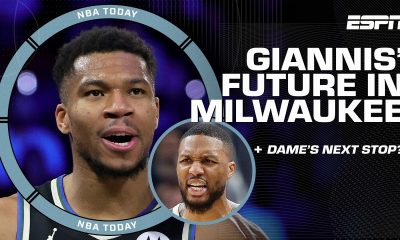
 Youtube3 weeks ago
Youtube3 weeks agoWill Giannis DEPART Milwaukee⁉️ + How signing Turner & waiving Dame impacts the Bucks | NBA Today
-

 Sports2 weeks ago
Sports2 weeks agoNew NCAA historical database provides wealth of information on championships
-

 Sports2 weeks ago
Sports2 weeks agoAdapti, Inc. (OTC
-

 College Sports2 weeks ago
College Sports2 weeks agoBuford DB Tyriq Green Commits to Georgia
-
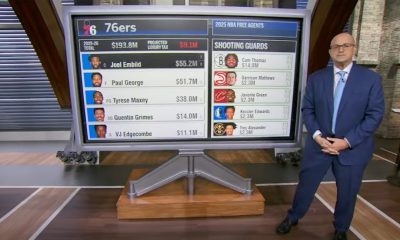
 Youtube3 weeks ago
Youtube3 weeks agoFREE AGENCY BREAKDOWN 🚨 What moves can the 76ers make? 🤔 | NBA Today
-

 High School Sports4 days ago
High School Sports4 days ago100 days to men's college basketball



























